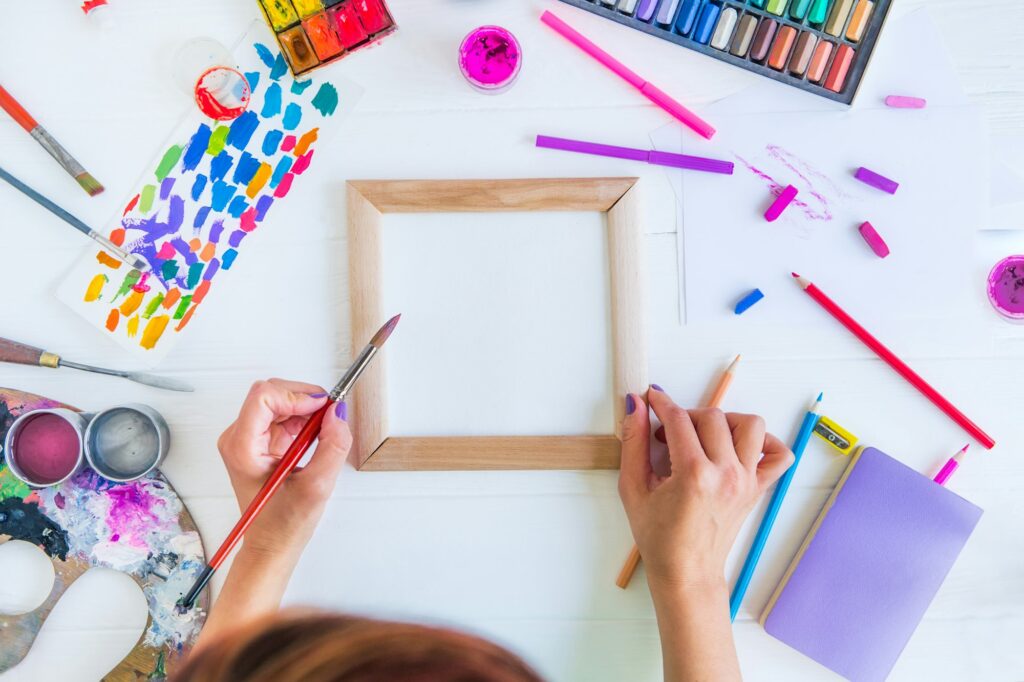Feeling overwhelmed by anxiety? You’re not alone. Millions of people grapple with this common mental health challenge. While traditional therapies are essential, there’s a powerful tool readily available: drawing. This simple act offers surprising benefits for calming the mind and promoting emotional well-being.
Drawing as a Stress Reliever:
So, how exactly does picking up a pencil translate to reduced anxiety? Here’s the science behind it:
- Mindfulness in Motion: Drawing requires focused attention on the present moment. Focusing on the movement of your hand, the feel of the pencil, and the lines forming on the page shifts your mind away from anxious thoughts and worries.
- Creative Expression: Art therapy, which often incorporates drawing, allows for non-verbal expression of emotions. This can be particularly helpful for those who struggle to articulate their feelings verbally. Putting emotions onto paper can be a cathartic and calming experience.
- A Sense of Accomplishment: Completing a drawing, no matter how simple, provides a sense of accomplishment and boosts self-esteem. This feeling of success can combat feelings of helplessness often associated with anxiety.
Drawing as Expressive Art Therapy:
Drawing goes beyond just a stress reliever. It can be a powerful form of expressive art therapy. Here’s how:
- Visualizing Emotions: Drawing allows you to externalize and visualize your inner world. By translating emotions into lines, shapes, and colors, you gain a deeper understanding of your own feelings.
- Processing Trauma: For those dealing with past trauma, drawing can be a safe and effective way to process and release difficult emotions. Visual representations can sometimes be easier to confront than verbalizing the experience.
- Building Self-Awareness: Through the act of drawing, you develop a greater awareness of your thoughts and emotions. This self-reflection can be a valuable tool in managing anxiety and promoting overall mental well-being.
Tips for Getting Started:
Ready to unleash the calming power of drawing? Here are some simple tips:
- Start Small: Don’t feel pressured to create masterpieces. Begin with simple doodles, mandalas, or even tracing existing objects.
- Focus on the Process: Enjoy the sensory experience of drawing. Pay attention to the feel of the pencil, the sound it makes on the paper, and the way the lines come together.
- Experiment and Explore: There are no rules! Try different mediums like charcoal, pastels, or watercolors. Explore different techniques and find what resonates with you.
- Let Go of Perfectionism: This isn’t about creating a gallery-worthy piece. The goal is to express yourself freely and without judgment. Don’t judge the judge or criticize the inner-critic. Just notice when those parts come up with curiosity!
Here’s a simple exercise you can try at home to harness the calming power of drawing:
- Baseline Check: Before you begin, take a moment to notice your current emotional state and physical sensations. Close your eyes and pay attention to your breath, your heartbeat, and any areas of tension in your body. This creates a baseline for comparison later.
- Intuitive Color Choice: Pick up a colored pencil that speaks to you in the moment. It could be your favorite color, or one that simply draws you in. Trust your intuition and don’t overthink it.
- Shape of Your Mood: Think of a shape or line that resonates with your current mood, energy level, or emotions. It doesn’t have to be anything logical or representational – just a visual expression of how you feel.
- Sensory Immersion: As you draw this shape, bring your full attention to the experience. Notice the texture of the pencil, the sound it makes on the paper, and the way the lines come together. Focus on the sensory details of the act of drawing.
- Flow and Freedom: Don’t be afraid to experiment and add more lines and shapes to the page. Let your hand flow freely and express itself without judgment.
- Shifting Sensations: Once you feel complete, take a step back and observe your emotions and body sensations again. Has anything shifted since you began drawing? What emotions come up as you look at your creation?
Remember, expressive arts is a personal and non-judgmental exploration. There are no right or wrong answers. Simply allow yourself to connect with your inner world through the act of drawing, and see where it takes you.
Drawing is a journey, not a destination. Embrace the process, be kind to yourself, and enjoy the calming and therapeutic benefits that come with putting pen to paper.

